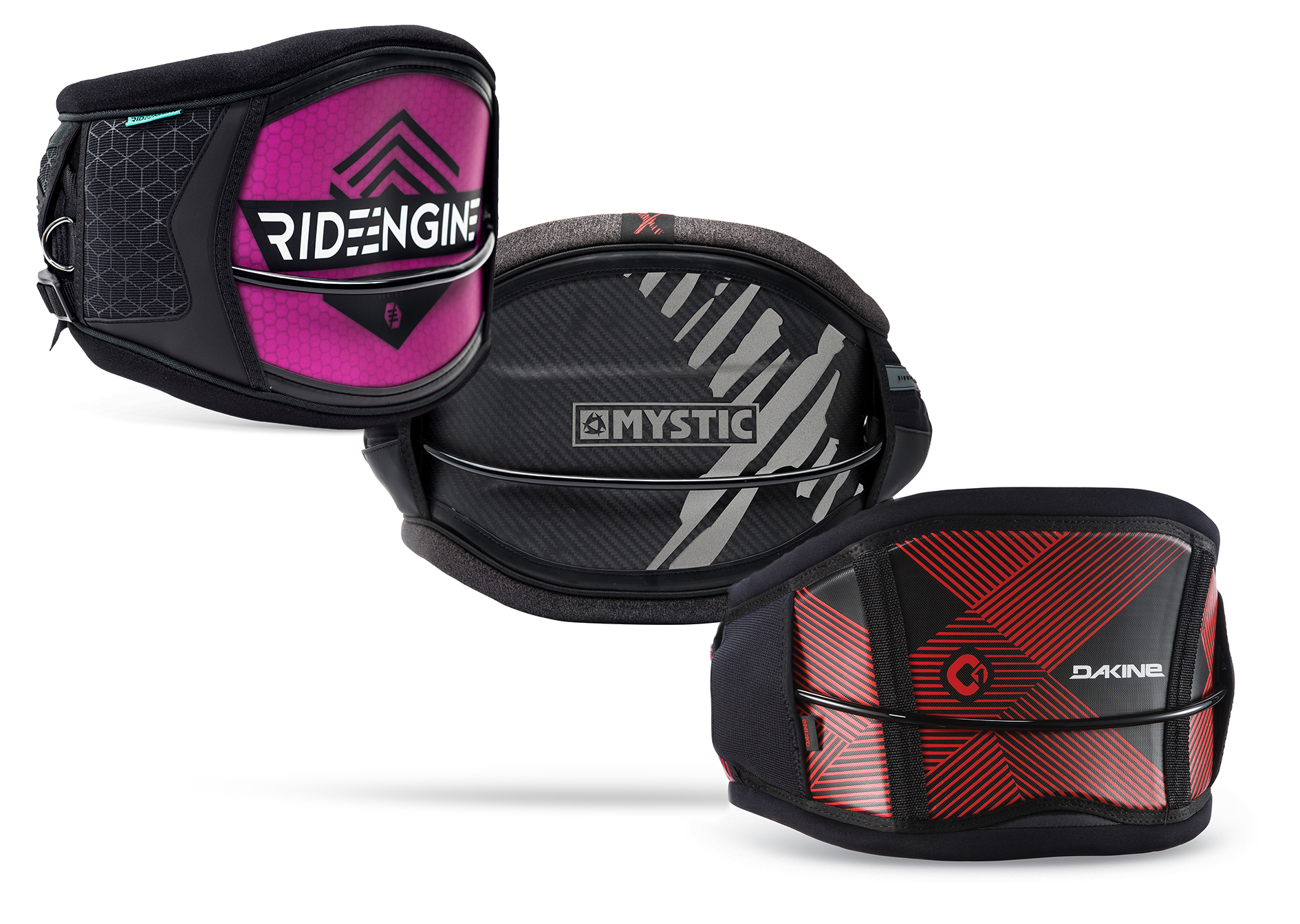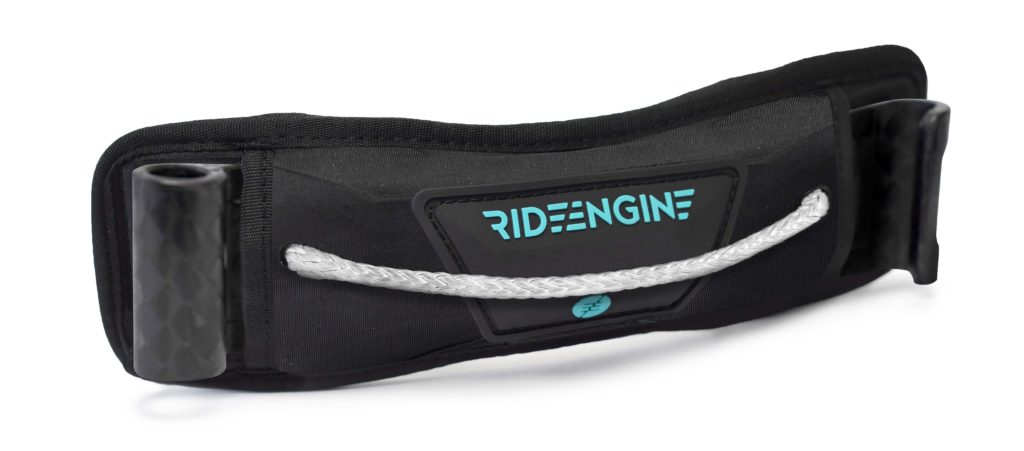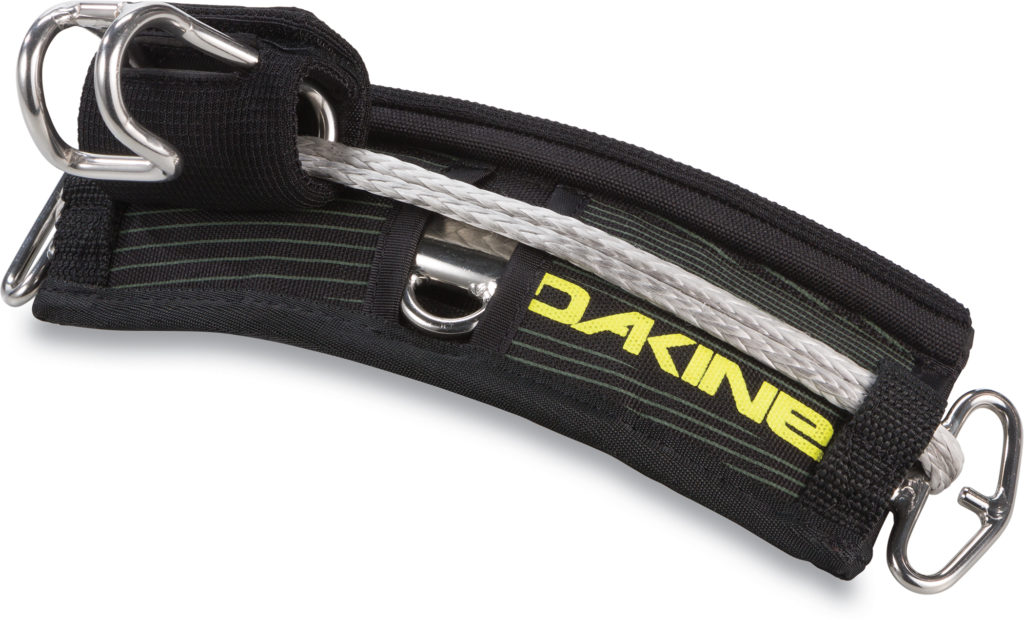2017 is the year of the hardshell harness. These new hardshell harnesses are breaking barriers in performance with locked-in comfort, added support and greater rider mobility. The more rigid, carbon or composite-plated construction, works in conjunction with the traveling spreader bar systems to improve comfort and mobility and also enhance the feel and control that flows from the kite’s key power connection point. They offer key advantages for directional board disciplines of kitesurfing or foil boarding.
The hardshell harness addresses some of the performance deficiencies inherent to some of the traditional soft shell harness that are equipped with a traditional fixed hook spreader bar connection. While many of the top soft shell harnesses deliver sufficient mobility and comfort, there was a compromise between a harness that had softer flex which increased mobility, but lacked some of the extra support and rigidity that’s required when the harness becomes more stressed with higher levels of pull from the kite. Softer flexing harnesses tend to collapse while highly loaded and the harness can pinch the rider’s mid-section which reduces comfort and overall mobility. The molded carbon plates that wrap the back and sides of the hardshell harness, prevent this collapse and reduce some of that added pinch. Many of the hardshell harness are designed to wear more snugly than traditional harnesses as they lock into your lower back to provide the additional stiffness and support where it’s most needed. These high end harness models are also built with technically advanced memory foam through the lumbar section so they can better mould to the shape of your back. Most of them are designed for narrowed and lower overall profile to increase mobility, especially through the sides where your body, at times, needs to be able to twist, compress and bend.
DAKINE C1 Maniac
Sizes: XS, S, M, L, XL
Dakine has been a leader and innovator of kite harnesses since the beginning, and the C1 harness with Dakine’s Texon hard shell system is like owning a custom-built harness that’s adapted to your body contours. The Dakine C1’s hardshell design actually forms to the rider’s body shape over time. The semi-rigid, hard shell is built with Dakine’s Adaptive Fit Composite (AFC) which is designed to mold to the riders body. The Dakine C1 features a low profile and narrow shape, but is more rigid through the back and sides with composite molding that keeps it stiff and supportive. It only takes a few good sessions to get the harness to form to your back allowing for a more comfortable, locked in fit. The C-1 Maniac comes with the popular sliding Maniac bar. For 2017 the C-1 Hammerhead comes with the new quick clip entry and exit Push button Hammerhead spreader bar.
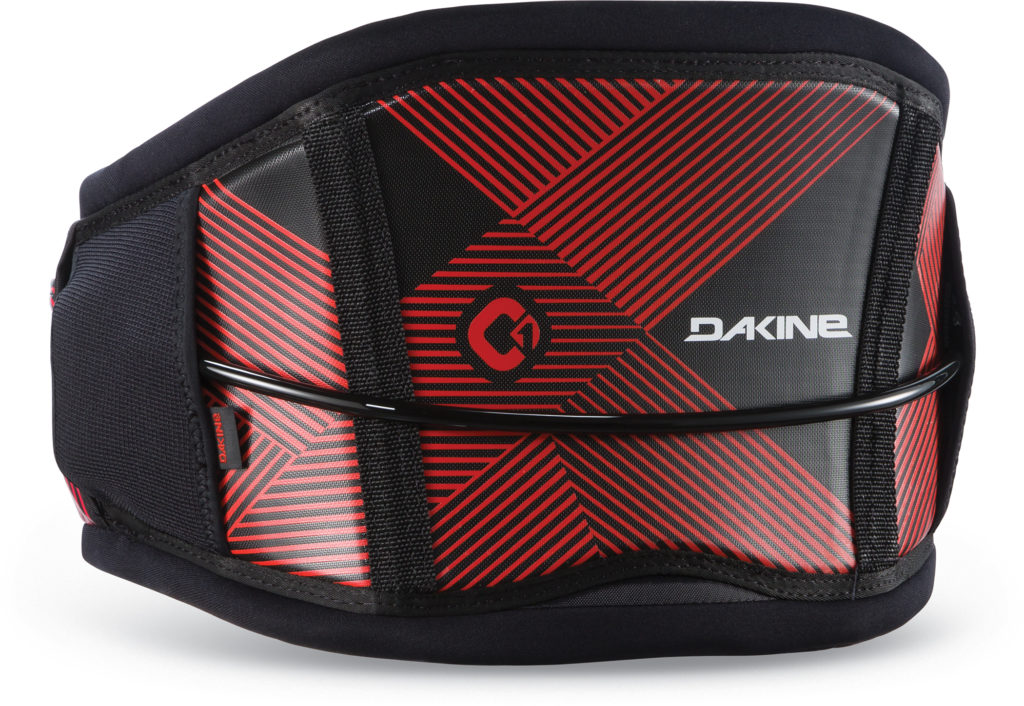

Ride Engine Hex Core Space Grape
Sizes: XS, S, M, L, XL, XXL
The Ride Engine Hex Core, is a hard shell design that took the kite harness industry by storm over the past two seasons with its locked in support and simple, sliding rope spreader connection. This harness locks you in place and is designed to be worn very tight so it will never ride up. Locked firmly at the lumbar the Hex Core Harness distributes the load evenly across the back and torso with the hard shell back increasing stiffness and support. The lower profile allows full range of motion for uninhibited wave riding or freeride foil boarding. The Ride Engine can be equipped with a carbon or metal slider bar or fixed hook spreader. The spreader cinch and connection system is also unique, quick to attach and extremely effective at cranking you down with a snug fit. It avoids any metal connection points with a simple strap and PVC loop system. This harness is a market leader for value, but you can up the game even more with Ride Engine’s Elite series lineup that features even stiffer, full carbon hard shell models.
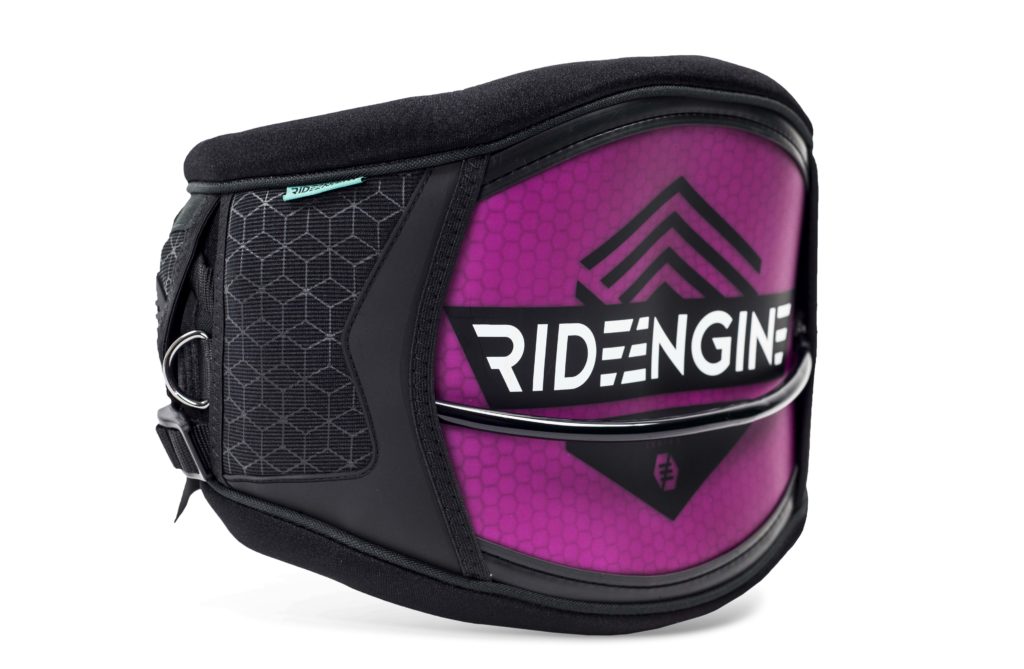
Mystic Majestic X
Sizes: XS, S, M, L, XL, XXL
The Mystic Majestic X takes the hard shell concept to new levels with its patent pending, bionic core frame. The semi-rigid back support is built with unique composite material that’s stiff and durable but allows more flexibility through the sides. The advanced carbon plate is constructed using a thermoplastic composite which also makes the Majestic’s shell more durable against cracks or dings. The sides of the carbon plate are designed to flex more which allows for greater mobility but still offers the extra support where it’s needed. This harness feels slightly more traditional in overall shape and width, but with the added stiffness and locked in feel of the carbon back plate it delivers a comfortable, locked in fit. The Majestic X can be equipped with either the fixed hook, or rope slider spreader bar systems. The slider rope for surf also has one of the widest length spreads of any of the rope style connections which further enhances comfort and mobility when riding toeside.
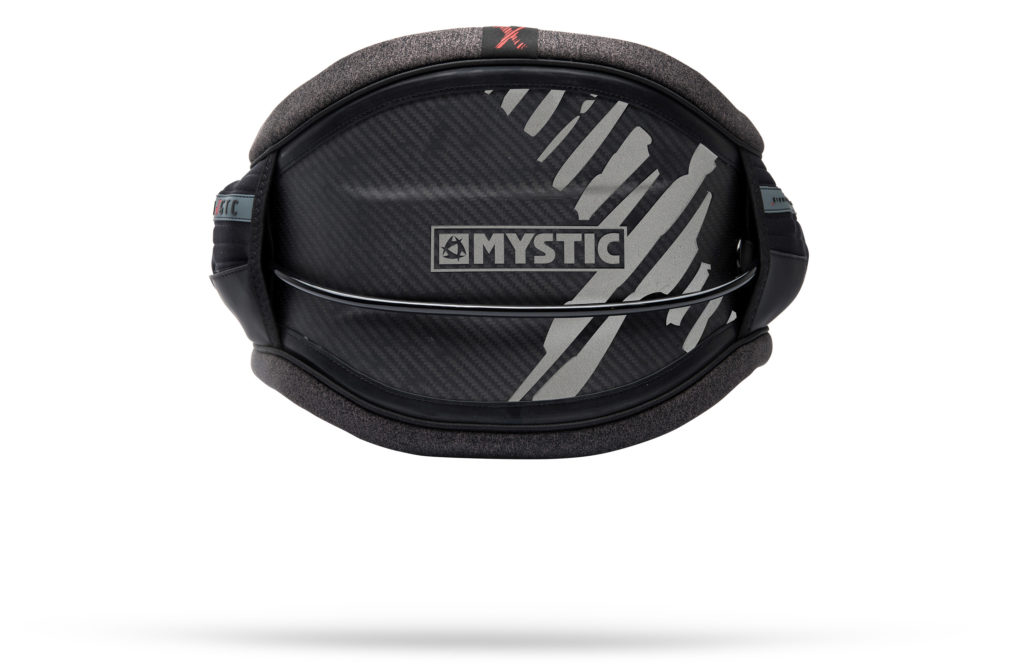
Connection Systems Reviewed: Harness Hook, Ropes and more…
The performance of the hardshell harness design is even more apparent with the use of the traveling spreader bar systems. These spreader bar systems either use a simple rope system like Ride Engine or the sliding bar hook design, like the one developed by Dakine. These connection systems have advantages over fixed hook systems for riders that never really need to unhook from the trim loop. The traveling spreader systems reduce the added friction and torque that can occur through the fixed center hook. The lack of a potruding hook on a rope slider also keeps the kite’s power and pull closer to your body and avoids the problems of the bar leveraging and rolling up when the kite is in higher positions above your head. The ability of the travelling connection point to shift to either side of the spreader bar increases rider mobility especially when riding toeside or carving at tighter angles away from the kite. Often with traditional harnesses and hooks, some dedicated kitesurfers would shift their harness manually to the side when riding toeside. The rope slider and travelling systems solve this problem. Having a rope slider or alternative traveling bar system allows the tow point to move freely from side to side giving the rider more freedom and a more secure connection with better load distribution through the harness body. Ultimately, the fit, added support and low profile design of the hard shell harnesses, combined with the rope slider or traveling spreader system, is a game changer especially for riding surfboards or foil boards. Having the proper fitting, hard shell harness can increase your freedom of mobility and ensure a locked comfortable feel that provides better connection to the pull, feel and handling of your kite.
Taking the Hook out of Hooked in
One of the newer evolving trends is different connection points to the harness. The traditional fixed hook transfers can ride up and twist into your body and also create more friction and inhibit the direct pull and feel of the kite at its most important connection point. Different companies are offering some alternative solutions to provide the added feel and mobility especially suited to riding a directional board, surfboard, or foil board.
The rope spreader has become the most popular and simple design for improving the feel and functionality of the kite’s pull through your harness, especially for certain disciplines. First and foremost it takes away the upward torque that a fixed bar user experiences when the kite pulls upwards or above the rider’s head. The one drawback to the rope designs is increased probability of wearing out the PVC coated trim loop and the rope line itself may need replacing over time. This system was first adopted by dedicated surf kiters that need the extra freedom you get when riding toeside as the harness can remain fixed while the connection point runs to the edge of the spreader line on your upturned hip edge. The rope spreader system gives you less awkward pull from the center and allows the rider more mobility to twist and ride toeside. It opens up the freedom to twist at your midsection and provide a more friction-free pull.
The Traveling Spreader Bar
Dakine’s Option Spreader Bar works using Kevlar straps that allow the traditional hook to slide to either side of the spreader bar. It can also be secured at the center with a Velcro strap system for the traditional, fixed hook set up. This bar is a bonus for the rider that wants the benefit of two bar systems in one. It functions in traveling mode much like the rope system, and grants more freedom of movement and easier positioning for toeside riding. The familiar hook system also ensures you won’t wear out your trim loop.
Cabrinha Fireball Review

Cabrinha offers its own unique all inclusive harness bar and connection point called the Fireball connection system. This is available with the Cabrinha Overdrive 1X control systems and uses a ball and socket connection point on the unique spreader bar system. The Fireball is Cabrinha’s answer to the friction and upward and rotational torque of the traditional harness bar and it reduces force against the rider’s core by 50 per cent. The ball floats in its socket with no friction no matter where the kite is pulling from and opens up the rider’s mobility with a system that is tight to the body and never binding. This system is amazingly easy to hook in and out of over rope systems and really opens up the freedom of movement and fluid pull from the kite. The Fireball socket bar is built to be compatible with most of the top harness brands but this system itself works only with the Cabrinha bar system and kites. This fluid and smooth connection point is something to experience and really lets the rider focus on riding waves or foil boarding. An advantage of the Fireball system is the greater depower distance that is available when riding toeside, compared to the sliding connection systems.


